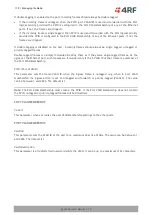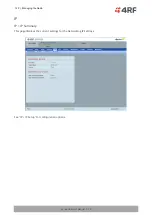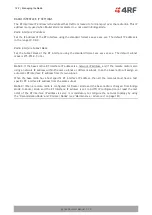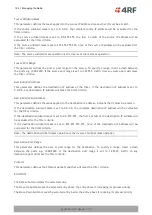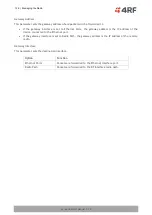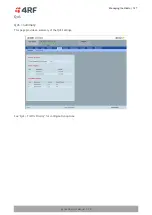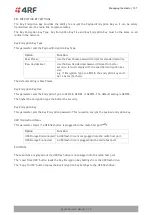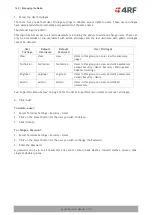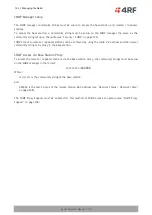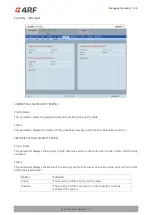
132 | Managing the Radio
Aprisa SRx User Manual 1.3.0
DSCP (Differentiated Services Code Point)
These settings provide translation / mapping between the external radio IP priority network and the radio
internal IP priority network, using the DSCP (DiffServ Code Point) priority field in the IP packet header.
Differentiated Services (DiffServ) is a new model in which traffic is treated by routers with relative
priorities based on the IPv4 type of services (ToS) field. DSCP (DiffServ Code Point) standard defined in
RFC 2474 and RFC 2475. DiffServ increases the number of definable priority levels by reallocating bits of
an IP packet for priority marking.
The DiffServ architecture defines the DiffServ (DS) field, which supersedes the ToS field in IPv4 to make
per-hop behaviour (PHB) decisions about packet classification and traffic scheduling functions. The six
most significant bits of the DiffServ field (in the IPv4 TOS field) is called as the DSCP. The standardized
DiffServ field of the packet is marked with a value so that the packet receives a particular
routing/forwarding treatment or PHB, at each router node. Using DSCP packet classification, traffic can be
partition into multiple priority levels.
The radio in router mode uses the DSCP value in the IP header to select a PHB behaviour for the packet
and provide the appropriate QoS treatment. The radio implements 4 priority queuing techniques that base
its PHB on the DSCP in the IP header of a packet. Based on DSCP, traffic can be put into a particular
priority / CoS (Class of Service) queue. Packets with higher CoS will always serve first for OTA transfer and
on ingress / egress Ethernet ports.
The ‘DSCP priority definition’ tab is used to map ingress IP packet with DSCP priority to the radio internal
priority / CoS. Since, in most of the cases the radio routed network is connected to the corporate routed
networks, the network administrator might like to have a different routed network priority scheme of the
radio network, for example management traffic in the multi-gigabit corporate routed network might be
prioritize with DSCP EF (expedite forwarding) code (DSCP highest priority), and SCADA traffic with DSCP
AF11 (assured forwarding) code (high priority), but in the narrow bandwidth radio network, SCADA traffic
will be map to radio very high CoS / priority (i.e. set AF11 = Very high) and management traffic might map
to radio low CoS / priority (i.e. set EF = Low) in order to serve first the mission-critical SCADA traffic over
the radio network.

